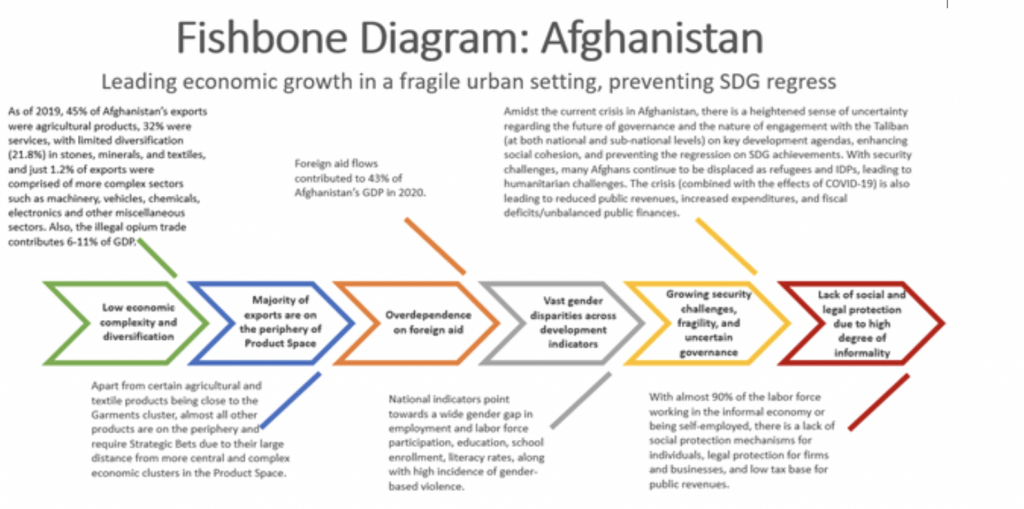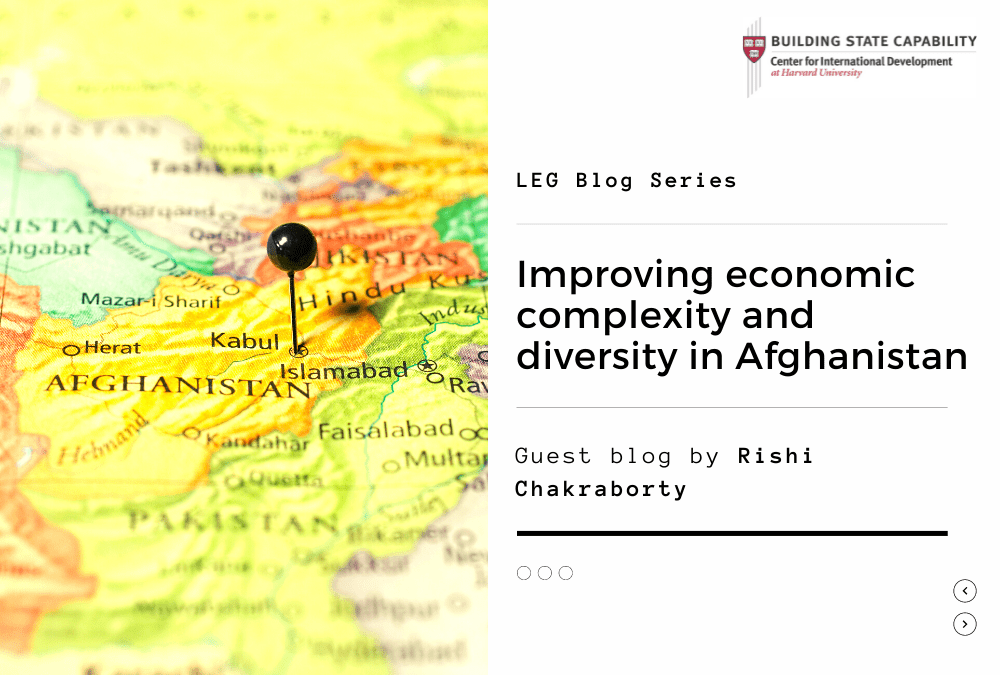Guest blog by Rishi Chakraborty
There are several key learnings that I will take away from this course. The first key learning for me was the novel way of thinking about development from the perspective of economic complexity and diversity, especially in terms of production/exports through the analogy of the forest with “branches”, “peripheries”, and “central clusters” of the Product Space. In all of my years of having studied economics at the BA and MA levels, this analogy of a forest and “monkeys” in the Product Space has been the most intuitive that I have encountered to date to describe a country’s economic growth challenges, and its simplicity and ingenuity will ensure that I will remember this concept for the rest of my life. Indeed, I am incredibly grateful that Professor Hausmann, Professor Matt Andrews, and the entire team at HKS LEG has shared this concept with us!
The second key learning for me was the potential and effectiveness of applying the PDIA approach. Too often in practice are we focused on high-level planning, year-long workplans, and the solutions before even defining the problem – only to see that these strategies fail one after another. It was extremely refreshing to be exposed to the step-by-step iterations of PDIA, and its commitment to defining the root causes of the problem, before developing strategies and policy recommendations.
The third key learning for me was the ways of thinking about inequalities that were shared by Professor Hausmann (in the lecture focused on Inequalities). It emphasized the remoteness of communities and their lack of connectivity to markets, which increased their cost of participation in production dimensions of the economy. It also emphasized the barrier of fixed costs and overcoming this barrier to connect more people as a strong instrument of tackling inequality and alleviating poverty, as opposed to more traditional approaches such as redistributive taxation policies.
Along with Gonzalo Pizarro and Renata Rubian from UNDP, I focused on the economic growth challenge of Afghanistan amidst its current crisis and fragile context with the change in administration, along with a special focus on the livelihoods of vulnerable population groups such as women, youth, IDPs, refugees, informal workers, and ethnic and religious minorities. Right from the start of the course, it was apparent (from the Atlas of Economic Complexity and the Product Space) that most of Afghanistan’s exports (as of 2019) were in agriculture and on the “periphery” of the Product Space, with “no easy jumps” to the “central clusters of the forest” with more complex economic sectors. However, certain specialized agricultural products did offer the opportunity to “jump” to the nearby garments cluster. Hence, in the short to medium term, the development of a garments industry would be realistic, actionable, and would also bring about improvements in livelihoods, social cohesion, and the empowerment of vulnerable communities at the local level. The examination of the development of garments in Bangladesh and Pakistan also provided optimism since both countries were also primarily based in agriculture in the past, and garments has been a major driver of growth and employment, particularly for women in both countries. More so, Bangladesh also shared the context of conflict and fragility like Afghanistan, albeit in 1971, and emerged with robust economic growth through the development of garments ever since. Venturing into garments would also provide more strategic jumps into other complex sectors such as chemicals (converting Afghanistan’s opium knowhow into the production of opioids), machinery, vehicles, electronics, and so on, along with the revival of IT and digital services that once blossomed in Afghanistan around a decade ago.
Other issues that were identified included over-dependence on foreign aid and opium, lack of inclusive and transparent governance with low appropriability, vast gender disparities across socio-economic indicators, growing and uncertain security challenges, and the lack of legal and social protection of informal workers (which comprise almost 90% of employment in the country). However, improving the low economic complexity and diversity of Afghanistan seemed to be the most actionable entry point (at both local, regional, national, and global levels), with potential long-term benefits across the other arms of the fishbone diagram.
I believe that I will employ the tools, methodologies, and novel perspectives that I have been exposed to during this course throughout my career for multiple economic challenges (with lifelong benefits at examining any socio-economic challenge), and not just the current challenge that we have focused on in this course. The analysis that was conducted for the specific economic challenge of Afghanistan will be integrated into the broader UNDP offer on dealing with the current crisis in the country.
I had a very specific question from one of the lectures! I am currently based in India and I remember that Professor Hausmann mentioned that India has a lot of economic complexity but low wages and the key binding constraint for economic growth is the country’s lack of quality infrastructure. I was curious to understand why India does not have quality infrastructure and why it struggles with improvement on this aspect (l really feel this binding constraint in my everyday life while living here and I see modest but not significant change over the years).
Another growth challenge question that I hope could be answered in future sessions is the global challenge of climate change and environmental sustainability, which increasingly threatens many livelihoods across the globe and is becoming intertwined with international development strategies. Like the lecture that focused on inequality, it would perhaps also be great to see a lecture that focuses on climate and environmental challenges (especially their implications on development, economic growth, and inequality)!


This is a blog series written by the alumni of the Leading Economic Growth Executive Education Program at the Harvard Kennedy School. 61 Participants successfully completed this 10-week online course in December 2021. These are their learning journey stories.
